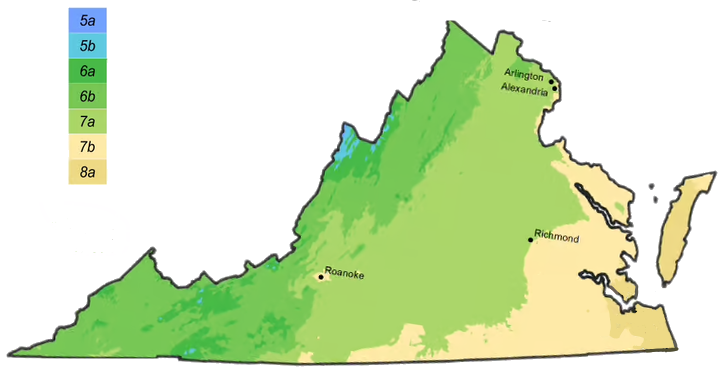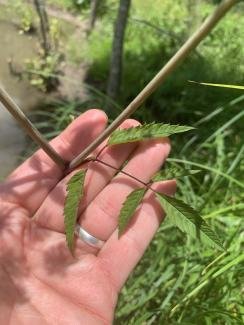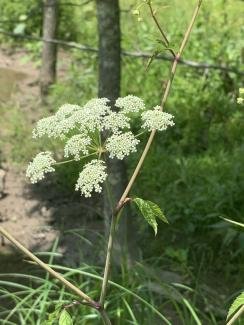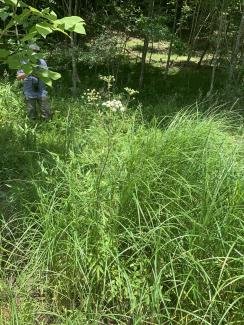Common Name
Water-hemlock
Spotted water-hemlock
Beaver poison
Spotted cowbane
Poison parsnip
Plant Form
Herbs
Duration
Perennial
Max Height (ft)
6.0
Growth Rate
Fast
Region
Coastal
Piedmont
Mountain

Additional Info
Floodplain forests, swamps (alluvial, seepage, maritime, tidal), freshwater tidal marshes, stream banks, wet meadows, ditches, and disturbed wetlands. Common throughout.
Wildlife Value: The nectar from the flowers attracts a variety of bees, wasps, flies, moths, butterflies, and a variety of other insects that have short mouth parts. It is a host plant for the Black swallowtail (Papilio polyxenes) butterfly. The fruits that are produced are eaten by water birds.
Poisonous to Humans
Poison Severity: High
Poison Symptoms: HIGHLY TOXIC, MAY BE FATAL IF EATEN! Muscle spasms, dilated pupils, dizziness, diarrhea, stomach pain, convulsions. Seizures, tremors, fever, bloat, respiratory depression
Flower Color
Cream/White
Flower Prominence
Conspicuous
Bloom Time
Spring
Early Summer
Late Summer
Light Requirements
Full sun
Partial sun
Moisture Requirements
In Water
Wet
Moist
Soil Texture
High organic matter
Loamy
Sandy
Pollinators
Bees
Butterfiles
Tolerates


